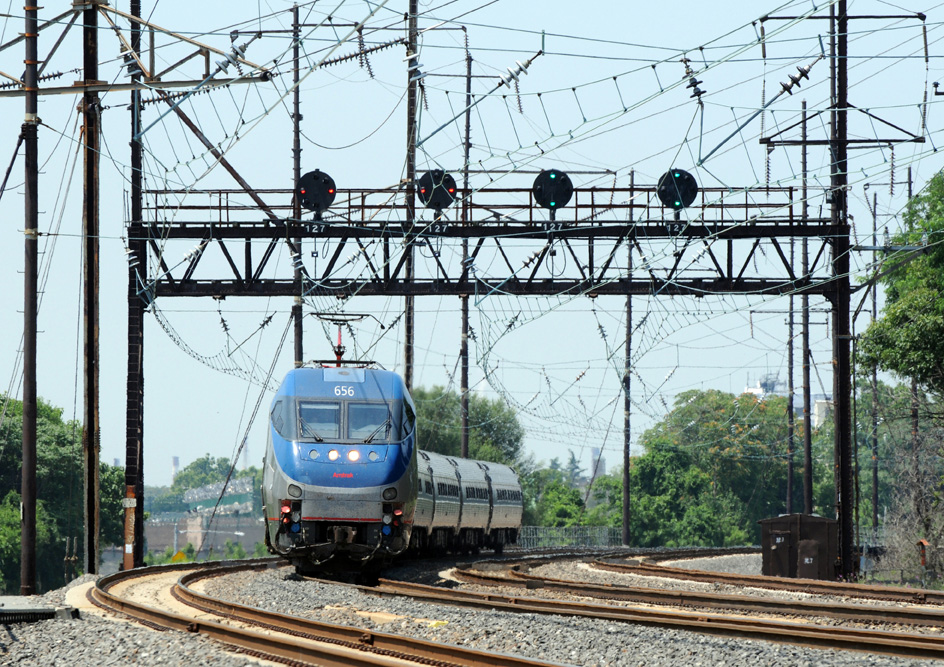
A lot of revenue-starved transit agencies around the country have been skimping on essential maintenance, and one of the more dire cases is in Cleveland, Ohio.
Cleveland has a rail system built in the 1960s and 70s that runs mostly on former freight rights-of-way. Sprawl has been eating away at ridership, but it still moves a fair amount of people. Total ridership on the city's three "Rapid" lines is almost 40,000 trips per day, with 26,000 on the Red Line alone.
But the maintenance bills are piling up. Advocacy group All Aboard Ohio called attention to the problem last month, saying a partial or complete "shutdown" of the rail system is "unavoidable" due to its aging rail cars. Blogger Tim Kovach evaluated the claim in a recent post:
[WCPN's Nick] Castele interviewed GCRTA’s General Manager Joe Calabrese, who confirmed much of All Abroad Ohio’s account, though the agency has sought to downplay the hysteria around the issue. According to Calabrese, GCRTA needs to raise $280 million in capital funds by 2025 to replace 65-70 of its aging rail cars. He emphasized that GCRTA "can’t get there alone. It’s going to take a more major investment."
What Calabrese failed to discuss is what happens if that influx of funding doesn’t materialize. As I have discussed on a number of occasions, I’m not sure it would be possible for the State of Ohio to care less about public transit if it tried. The state provided just $7.3 million in general funds for transit in its latest budget, down 83.5% from 2000. So, at that rate, Ohio won’t scrape together $280 million for all transit funding throughout the entire state for another 38.4 years.
But that obviously doesn’t accurately reflect the state funding actually coming GCRTA’s way. In recent years, the state has broken transit funding into four main tranches: the Urban Transit Program, the Rural Transit Program, the Elderly and Disabled Transit Fare Assistance Program (E&D), and coordination grants (which it eliminated in 2009). Because Northeast Ohio is an urbanized area with a population well over 50,000, GCRTA receives funding from the Urban Transit Program. Given that it is the largest transit agency in the state, it receives the biggest chunk of urban transit funding (18%) each year. The agency used to receive E&D funding ($2.8 million per year in 2008-2009), but the state eliminated that funding for urban areas in 2009, reallocating it to rural agencies.
The only problem is that urban transit funding has evaporated in Ohio. For fiscal year 2016, GCRTA will receive $1,360,080 in funding through this program. If the agency devoted every penny of this allocation to procuring new rail cars, it would only take 206 years for it to save up $280 million. But, once again, this actually exaggerates Ohio’s support, as it includes federal funds. Urban transit funding from the state has, quite literally, fallen off a cliff since 2001. Whereas the 2000-2001 budget provided nearly $30 million in total funding for urban transit operators, that funding was halved in 2002 and has continued to dwindle to just $1.4 million by 2014. Given that GCRTA gets 18% of this funding, the state is really providing roughly $252,000 of its budget to fund transit in Northeast Ohio. Accordingly, if we wanted Ohio to foot the bill for this, GCRTA could expect to get its new rail cars running sometime in the year 3126.
It still seems a bit hyperbolic to claim that GCRTA’s light and heavy rail lines will inevitably shut down next decade. But, unless something changes dramatically at the Statehouse, the odds of that outcome increase each day.
Ironically, Cleveland's rail system helped it beat out competitors like neighboring Columbus to snag the 2016 Republican National Convention. But the flurry of investment in infrastructure for "visitors" so far hasn't addressed this problem.
Elsewhere on the Network today: Broken Sidewalk reports that Louisville is getting its first bike lane with green paint. Mobilizing the Region says that if House Speaker Paul Ryan won't raise the gas tax, he's burdening drivers with higher repair bills. And Bike PGH carries Mayor Bill Peduto's response to three recent traffic deaths.





